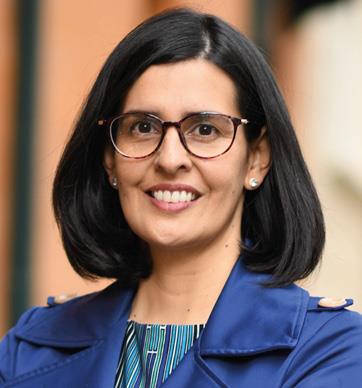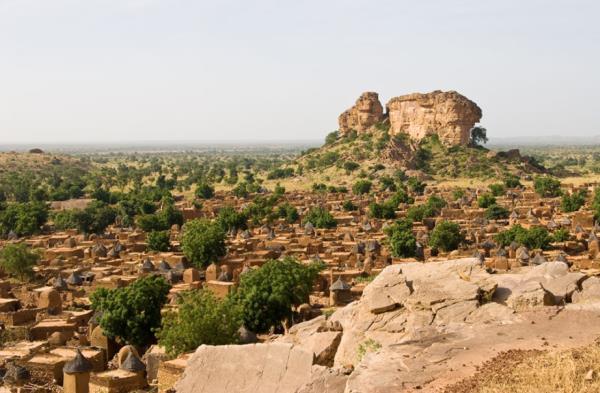13 November 2024

Martha Suarez, President of the Dynamic Spectrum Alliance
Wireless Internet Service Providers (WISPs) have an important role to play when it comes to bridging the digital divide. They have the capacity to reach unserved and underserved areas and have consistently shown their intention to deploy access networks to low-income areas where bigger operators have yet to reach. The local nature of WISPs enables them to understand the needs and limitations of rural and remote users, thereby serving smaller communities better.
There are already a significant number of WISPs operating across Africa. If these are to break down the barriers to reliable connectivity – coverage, service and affordability – spectrum access will be essential. License-exempt spectrum access in the 2.4, 5 and 6 GHz bands is a necessary element of the WISP business model and remain the primary way for subscribers to access internet services.
Kenya
Kenya has been one of the fastest growing markets in Africa; the country’s ICT sector has continued to experience steady growth over the last decade alone. Yet, despite this growth, there is room for improvement. By September 2022, approximately 98% of the population was covered by at least one 4G mobile network, which is reflected in the high share of mobile broadband connections (97%) within the country. The fixed broadband market is limited, with only 3% of the population experiencing it, and a low broadband penetration rate of 7.5%.
The greatest barrier to success for WISPs in Kenya is the difficulty in competing with the larger providers. Due to ongoing congestion problems related to the country’s intensive use of the 2.4 and 5 GHz bands, as well as the difficulties in accessing expensive fibre backbone connections, WISPs impact at the moment is constrained. While Safaricom – Kenya’s largest player within the ICT ecosystem – grant WISPs access to its fibre network, this is an expensive venture and only seen as a temporary measure.
However, the connectivity landscape in Kenya is changing, with the Government’s ‘National Digital Masterplan’ currently deploying 100,000 km of fibre to provide internet access to key sectors, including schools, rural businesses, homes and public sectors. With half of the Kenyan population expected to be living in urban areas by 2025, the Masterplan, alongside the rapid urbanization within the country, is offering WISPs the chance to expand their influence. Despite only having less than 20% of Kenya’s fixed broadband market share, WISPs are already making a difference in terms of overcoming reliability challenges. Through their knowledge of local communities, and their ability to service and maintain fewer sites, WISPs are filling the gap for users where fibre is absent or unreliable.
If WISPs can gain access to the full range of the 6 GHz band, including for standard power applications, then the issues of congestion would be solved. Having been granted the use of the lower 6 GHz band for unlicenced use in 2022, current estimates suggest that the cumulative economic value of using the full band between 2022 and 2031 would amount to $14.28 billion USD in additional GDP for Kenya, alongside a $1.12 billion producer surplus for enterprises, and a $4.89 billion consumer surplus for the general population.
Community networks have been also growing in Kenya in the last months, thanks to the regulatory leadership of the Communications Authority that adopted a specialized regulatory framework for their operation in the country.
South Africa
South Africa currently has the third largest nominal domestic product (GDP) across the continent, and - despite high levels of inflation and an economic slowdown - a thriving ICT sector. 68.2% of the population are believed to be using the internet regularly. However, at the same time, 90% of homes in South Africa only have internet access via mobile data, and such connections are expensive, and often data limited. As of 2023, the average data price of an unlimited 4G broadband plan costs around 399 ZAR, an expense likely too great for the 30.3 million South Africans (55% of the population) living under the poverty line.
Many WISPs have shifted their business model from capped to uncapped data offerings. Although uncapped, WISP data plans can be time based for residential customers, while a monthly subscription is typical for small and medium enterprises (SME) and other corporate customers. This gives users flexibility to choose the most suitable package for their needs. WISPs and community networks have been able to compete in South Africa through personized services. When compared to generic, price-driven offerings made by large national competitors, these services create a sense of exclusivity and attachment for the user, making them and their businesses feel important. Continued support from the WAPA and SABISPA industry associations will help WISPs maintain their unique positioning.
This hasn’t stopped large providers, such as Vodacom and MTN, from competing with WISPs in the market however. MTN Supersonic, the fixed broadband business unit, has begun offering services in smaller towns, and the company has the financial capacity to use state-of-the-art FWA equipment to reach markets previously served by the WISPs. The market itself is undergoing a significant consolidation phase itself, with HEROTEL acquiring over 33 smaller ISPs and WISPs to increase its position in the market. Over 100,000 subscribers are now serviced by HEROTEL, with 80% of these through fibre networks.
“License-exempt spectrum access in the 2.4, 5 and 6 GHz bands is a necessary element of the WISP business model and remain the primary way for subscribers to access internet services.”
Nigeria
Nigeria remains the most populous country in Africa with over 220 million inhabitants, and much like Kenya, its ICT sector has experienced significant growth in recent years. Between 2010 and 2020, the share of the population using the internet tripled from 12% to 36%, yet Nigeria continues to underperform in terms of delivering reliable connectivity to all.
In January 2023, the country’s median fixed broadband speed of 12.2 Mbps ranked Nigeria in the bottom quartile worldwide. Fixed broadband penetration currently reaches only 0.03% of households, far below the average rates seen in sub-Saharan Africa (0.6%) and comparable countries like South Africa (0.34%). While the government has been trying to increase access to internet services in the country through its ‘National Broadband Plan’, implementing policies to support rural and underserved areas, a lack of reliable electricity and available infrastructure has frustrated these efforts. The target of having 120,000 km of open access, shared fibre infrastructure by the end of this year now seems unobtainable, with only 52,000 km of fibre having been successfully deployed by Q3 of 2022.
Despite these setbacks, and uncertainty on how the upcoming fibre network will be managed once completed, there still holds some promise for WISPs in Nigeria. They have already been able to get a foothold in the country by low-price offerings such as daily subscriptions for open Wi-Fi spots in highly transited areas. Increased urbanization also means WISPs will be able to serve more people in the populated areas they mainly operate in.
In Nigeria, the use of the 5.47-5.725 GHz band is designated for unshared, coordinated, and protected use of Wireless Access Systems (WAS), while the frequency ranges 5.25-5.35 GHz and 5.725-5.8 GHz are unlicensed. Neither the NCC – the country’s spectrum regulator – nor the internet providers have expressed any difficulty with the use of the unlicensed bands, yet access to the full 6 GHz band would provide room for future growth both in subscriber base and capacity, bringing a $72.14 billion USD boon should licence-exempt access be granted.
From a regulatory perspective, more can be done to support WISPs in Nigeria. Introducing specific provisions in the country’s telecoms licencing framework to help the WISP market thrive, or a specific incubation strategy to foster growth of the internet provider system would go a long way to give WISPs the tools to ensure reliable connectivity across the country.
Best practises for the future
Whether it is Kenya, South Africa, or Nigeria, every country has its own legal, market and cultural landscape to consider when it comes to the broadband penetration. Countries and entities looking to close the digital gap should be looking to use some of the best practices seen in Africa to support further growth and development of WISPs.
One is the regulatory and licencing framework established by the Communications Authority of Kenya (CA). Defining a community network as a non-profit internet service provider managed by communities, CA is offering a cost-effective way to apply for licences, which is an important precedent for developing regulations targeting smaller WISPs in Kenya.
The development of WISP industry associations will also be key. In South Africa, WAPA and SABISPA represent smaller ISPs, giving them more freedom to advocate for regulation or projects promoting WISPs.
In a dynamic, competitive market, the importance of empowering WISPs to advocate for their interests and stand up to larger operator interests cannot be understated. In this sense, WAPA and SIBISPA are better positioned to advocate for WISP interests than other global industry associations. WISPs associative efforts have been seen in Kenya recently, and hopefully they will materialise in the short term.
Across Africa, WISPs understand the needs and limitations of users, enabling them to serve smaller communities more effectively. This makes them valuable allies for governments in their efforts to provide inclusive, affordable, and sustainable broadband access, ultimately driving meaningful connectivity and digital transformation.








